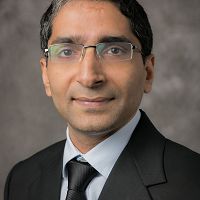Krapu and Kumar, 2015
Optimal groundwater and soil moisture sensor placement for estimation of event streamflow
Krapu, C.; Kumar, M. (2015)
American Geophysical Union Fall Meeting, December 2015, San Francisco, CA
-
Calhoun, GRAD STUDENT
-
Calhoun, INVESTIGATOR
Abstract
Given that streamflow response at the watershed outlet is a function of soil moisture and groundwater dynamics within the watershed, it is reasonable to hypothesize that observations of groundwater and soil moisture can be used to estimate event streamflow. We investigate this hypothesis by using spatially-distributed groundwater and soil moisture time series generated by a physics-based hydrologic model, PIHM. In the absence of data from an intensely observed real watershed, the simulated time series are considered as a surrogate for observed data in this analyses. Next, we identify the optimal locations for groundwater and soil moisture observation for estimating the magnitude of quickflow events. Results indicate that even in a large watershed with heterogeneous land cover and soil properties, nearly 90% of the variance in event quickflow can be explained with measurements of antecedent and in-event soil conditions. Close examination of the identified sites show that soil properties and topography of the modeled system allows for general, practical rules to enhance the accuracy of streamflow estimation via groundwater wells and soil moisture sensors. The experiment also demonstrates that the problem of sensor placement, typically cast as a combinatorial optimization is easily tractable in practice via a combination of evolutionary optimization and random sampling.
Citation
Krapu, C.; Kumar, M. (2015): Optimal groundwater and soil moisture sensor placement for estimation of event streamflow. American Geophysical Union Fall Meeting, December 2015, San Francisco, CA.
Explore Further


